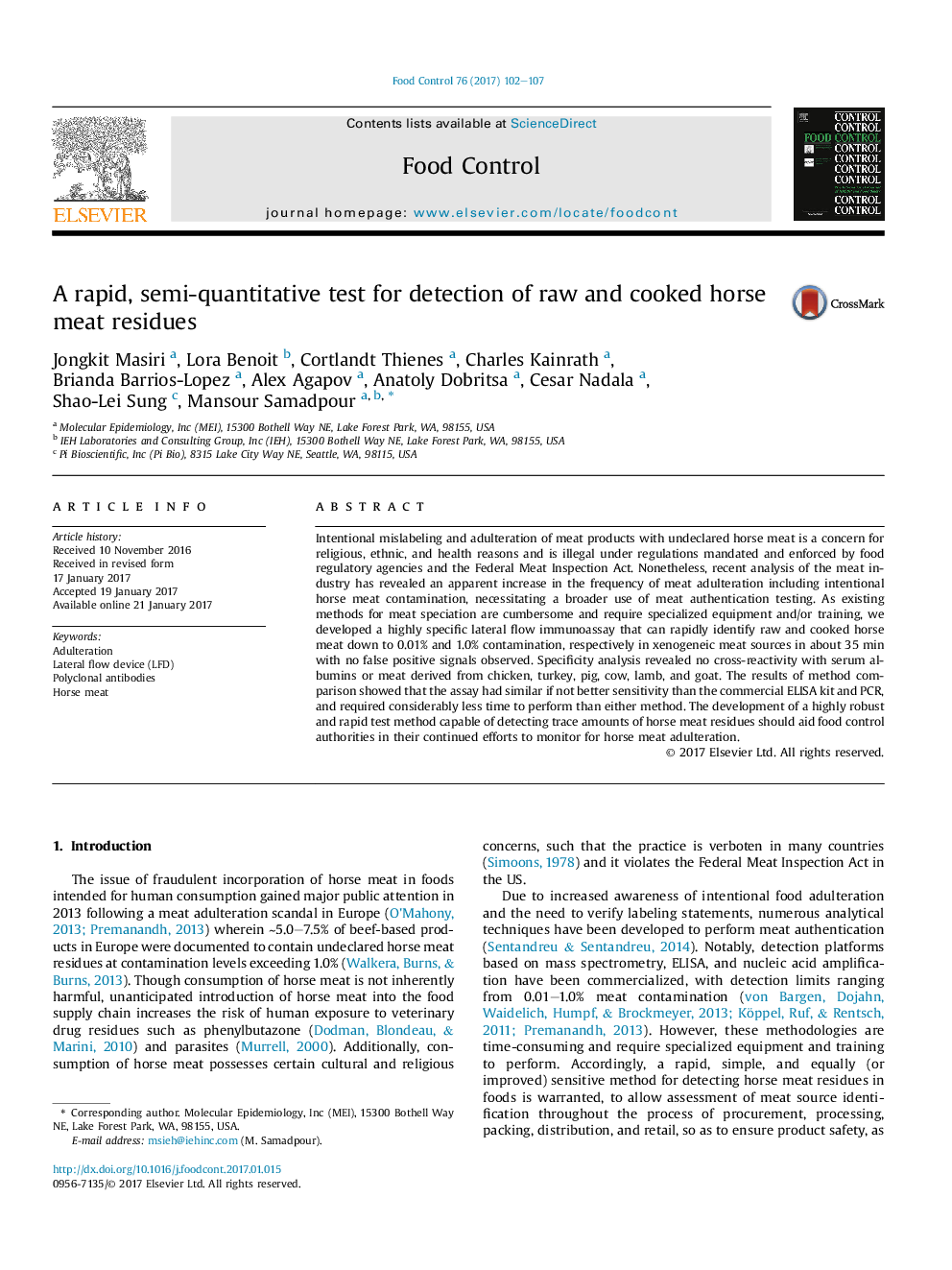| کد مقاله | کد نشریه | سال انتشار | مقاله انگلیسی | نسخه تمام متن |
|---|---|---|---|---|
| 5767595 | 1628388 | 2017 | 6 صفحه PDF | دانلود رایگان |
- Mixing of undeclared meat species in meat products is illegal worldwide.
- Horse meat gained major public attention in 2013 following a meat scandal in Europe.
- A novel LFD based on pAbs for rapid detection of horse meat residues is developed.
- It detects raw and cooked horse meat at 0.01% and 1% contamination, respectively.
- The test system should aid food industry in monitoring for adulteration with horse.
Intentional mislabeling and adulteration of meat products with undeclared horse meat is a concern for religious, ethnic, and health reasons and is illegal under regulations mandated and enforced by food regulatory agencies and the Federal Meat Inspection Act. Nonetheless, recent analysis of the meat industry has revealed an apparent increase in the frequency of meat adulteration including intentional horse meat contamination, necessitating a broader use of meat authentication testing. As existing methods for meat speciation are cumbersome and require specialized equipment and/or training, we developed a highly specific lateral flow immunoassay that can rapidly identify raw and cooked horse meat down to 0.01% and 1.0% contamination, respectively in xenogeneic meat sources in about 35Â min with no false positive signals observed. Specificity analysis revealed no cross-reactivity with serum albumins or meat derived from chicken, turkey, pig, cow, lamb, and goat. The results of method comparison showed that the assay had similar if not better sensitivity than the commercial ELISA kit and PCR, and required considerably less time to perform than either method. The development of a highly robust and rapid test method capable of detecting trace amounts of horse meat residues should aid food control authorities in their continued efforts to monitor for horse meat adulteration.
Journal: Food Control - Volume 76, June 2017, Pages 102-107
